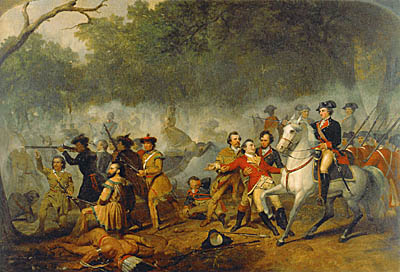Death is the great equalizer, the shared fate that binds all humans together, and it is always a tragic loss. Most tragic, though, is the loss of young life.
There are so many questions about what might have been. So when archeologists digging in Maryland discovered an infant buried in a lead-lined coffin dating back 300 years, they likely asked themselves such questions.
However, there were more pressing ones – who was the infant, and what could the discovery reveal about life in the early American colonies?
#Archaeology. He was only six months old: DNA testing links 300-year-old remains of baby to a Colonial Md. governor https://t.co/Iytjm8qp6e pic.twitter.com/BR9a6bj8Qf
— Kathleen O’Neal Gear (@GearBooks) November 8, 2016
According to the Washington Post and Daily Mail, the tiny coffin was found in 1991 during an excavation of what was once the village of St. Mary’s City, buried near the coffins of governor Philip Calvert and his first wife, Anne.
Established in 1634, St. Mary’s City was the first colonial settlement in Maryland, and Catholics and Protestants lived together tolerably until tension between the groups grew during the mid-1600s. When the capital moved to Annapolis in 1695, St. Mary’s City dissolved. It was turned into farmland soon after and has since become a digging site for archeologists eager to discover telling relics of colonial life.
DNA testing links 300-year-old remains of a baby to a Colonial Md. governor https://t.co/obzPMrxjUV
— Kristina Killgrove ☠ (@DrKillgrove) October 17, 2016
When researchers began to study the infant in the hopes of determining its identity, the body was so underdeveloped that it was unclear whether the infant was a boy or girl. Smithsonian Institute physical anthropologist Douglas Owsley asked Harvard geneticist David Reich to study the infant’s DNA.
When DNA from the infant’s bones was compared to DNA extracted from the bones of Philip Calvert, it was found that the infant was Philip Calvert’s son. Although scientists could not obtain DNA from Anne, they surmised that the child was born after Anne died and was a product of Philip’s second marriage to Jane Sewell.
Body of baby linked by DNA test to Maryland governor reveals lives of colonial Americans https://t.co/rh8JEgJ0PM
— Thus Spake (@thus_spake) October 17, 2016
The infant boy was probably born in 1682, four years after Anne died and Philip Calvert had been remarried to Sewell. Calvert died shortly after, and Jane was left to raise the boy on her own.
About a year later the infant died, and Jane left America and the coffins of Philip, Anne, and the infant buried under the stone floor of a brick chapel. In time, the chapel was torn down, and the plot returned to farmland, leaving a mystery for archaeologists and forensic scientists to unravel centuries later.
The infant’s small coffin was expensive, evidenced by the lead lining that would have been shipped from Britain, and it was made of oak that was laced with traces of pine pollen. This led researchers to conclude that the infant died in the springtime.
DNA testing links 300-year-old baby corpse to a colonial governor of Maryland https://t.co/NcIIKfn9Zw pic.twitter.com/VGvlnVsY6x
— Daily Mail US (@DailyMail) October 17, 2016
Colonial life was harsh, and the infant’s body reflected this. Examinations revealed a sickly child with deformed rib bones indicating rickets, which is caused by a vitamin D deficiency that results in the softening of bones.
Scientists speculate that the infant’s case of rickets was from swaddling, which prevented him from receiving sunlight needed to generate vitamin D in his body. The infant had also suffered from scurvy, usually associated with a vitamin C deficiency. Anemia in the infant’s bones was probably from bleeding techniques that doctors of the day used as a universal treatment and cure, Mail Online reported.
The mystery of the 300-year-old infant is solved at last, but it is intriguing to imagine what he might have become. Would he have continued in his father’s political footsteps? He would have been heir to Philip Calvert’s wealth had he survived. St. Peter’s, Calvert’s home, was the largest private, brick building in colonial America and a testament to his fortune and power as governor. Unfortunately, none of this could save his son whose fate, like that of the other colonists who likely rest underneath what was once St. Mary’s City, is a testament to the trials of early American life in the colonies.
